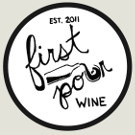Grapes, sometimes referred to as varietals when printed on the label, are the primary ingredient in making wine. This means that the type of grape usually plays a large role in dictating the character of the wine. In a way, every grape has it’s own personality and temperament. For instance, Riesling, which enjoys cooler climates, is unlikely to enjoy growing in the same environment as Cabernet Sauvignon or Syrah. This also means that a Grenache from the Rhone in France is unlikely to have the same character as a Grenache from the McLaren Vale in Australia. Many factors, ranging from Terroir, or the soil and earth the wine is raised in, to weather to harvest, and even winemaker’s decisions, play major roles in creating the wine’s final character.
While there are many different kinds of grapes, there are typically 6 that represent the classics, and are associated with the best wine. These varietal names are very likely to be listed on the bottle new world producers (Non-European), although some old world producers are starting to list them as well:
[W] = White , [R] = Red
The 6 Noble Grapes
- Riesling [W]
- Sauvignon Blanc [W]
- Chardonnay [W]
- Pinot Noir [R]
- Merlot [R]
- Cabernet Sauvignon [R]
These are not the only important grapes though, many other grapes have long traditions or are frequently made into their own wines or used in blends:
Other Important Whites:
- Chenin Blanc
- Gewürztraminer
- Pinot Blanc
- Pinot Gris
- Sémillon
- Viognier
Other Important Reds:
- Cabernet Franc
- Sangiovese
- Tempranillo
- Syrah / Shiraz
- Zinfandel
Other Whites:
Other Reds:
Hybrid Whites:
As First Pour Wine continues to grow, this page will be updated with more varietals, as well as links to pages describing each grape.
